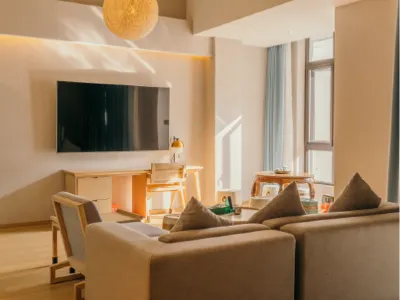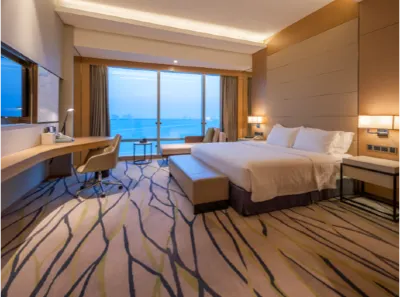
Best Hotels in Granada, Spain – Compare Prices, Reviews & Book Online
✓ 300M+ traveller trusted Trip.com ✓ 1.8M+ daily users ✓ 147M+ verified reviews ✓ 24/7 support in 30 seconds
Swipe down to view more
Filter by:
Hotel Star Rating
≤2345
Guest Rating
9+8+7+6+Popular Filters for Granada
Breakfast includedHotelParking availableFree cancellationPoolAlhambraCentro1 double bedWithin 1 kmPrivate toiletProperty Type
HotelServiced apartmentResortApartmentGuest houseVacation homeVillaPensionBed and breakfastChaletHomestayHostelCapsule hotelInnProperty facilities & services
Parking availablePoolCurrency exchangePets welcomeSpaFree parkingGymElevator24-hour front deskLuggage storageSmoking areaWi-Fi in public areasSaunaLaundry roomEV charging stationBarbecueWater parkGolf courseRestaurantCar rentalsBarConference roomairport transfersWake-up callFind Best Granada Hotels - 338 Options with Great Prices & Reviews
Explore a curated selection of premier accommodations and compare top rated hotels in Granada to find the perfect match for your travel style and budget. Book with confidence, backed by verified guest reviews.
Most Booked
Lowest price
Closest to downtown
Highest Rated
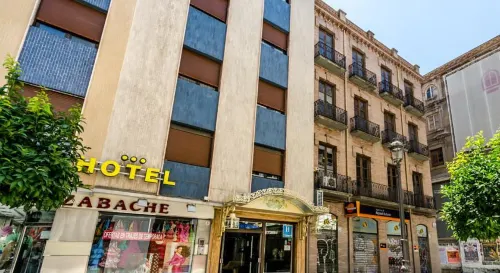
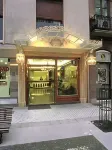
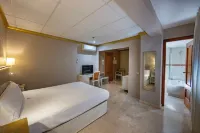
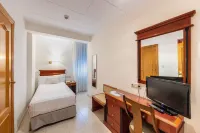

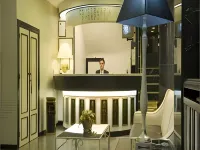
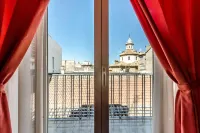
99+
Hotel near Centro,Granada
Public parking
Airport pick-up
24-hour front desk
+6
"The air conditioner is very powerful. I washed my clothes and they were all dry the next day with the air conditioner on. The front desk service is also very good. You need to leave enough time to take bus 33 to the bus station and take bus c320 to Agong. It takes about 25 minutes in total"
Great
51 reviews
9.3/10
1 night
From €40

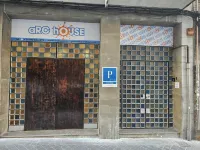

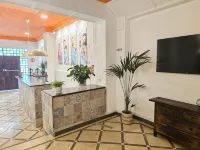
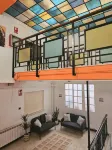


99+
Hotel near Ronda District,Granada
Luggage storage
Wi-Fi in public areas
"A youth hostel in Granada, public toilets. The room was clean, the subway was convenient and the room was cheap. But luggage storage is charged, a 5 euros"
59 reviews
7.4/10
1 night
From €19


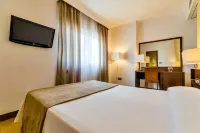

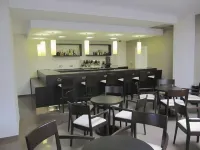


81
Hotel near Ronda District,Granada
Skiing
Public parking
24-hour front desk
+6
"My experience at this hotel was simply exceptional. From the moment we arrived, the service was unbeatable, with friendly staff always willing to help. We were surprised by an incredibly spacious room, so large it almost felt like an apartment. I understand that this isn't always the case.
The cleanliness was impeccable, and the hotel's atmosphere was extremely peaceful, ideal for relaxing and unwinding. Every detail was taken care of, making our stay perfect.
Without a doubt, a 10/10 experience. I recommend it without a doubt and would gladly return."
Very Good
122 reviews
8.1/10
1 night
From €29
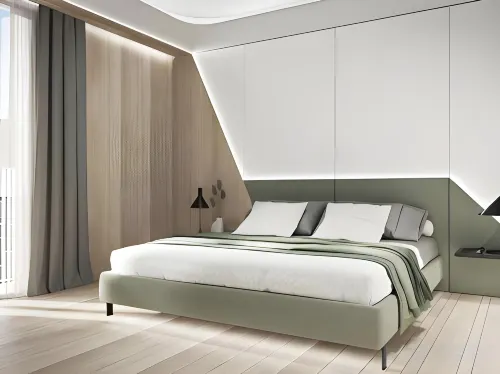
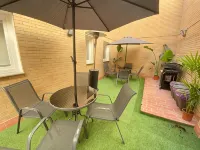

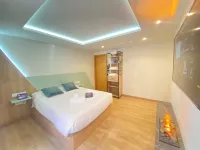

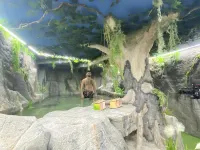

99+
Hotel near Centro,Granada
Spa
Parking
24-hour front desk
+2
"Hello,
Okay, overall, a 6/10 is the perfect score... shower seals coming loose, aging damp patches and black spots in the shower. Overall, it's quite clean. The high-tech features are good but also aging, e.g., the crappy TV, as well as the ”smart” toilet that opens, closes, and cleans itself at night. And above all, the bedding is very poor, where you sink in as soon as you lie down! It's impossible to turn around or move afterward!! That's the worst part!
Overall, well, you get what you pay for. When you book, you know you're not staying in a 4 or 5-star hotel either!!!
It's a shame about the staff, who are really super friendly, and that's a 10/10!
Another plus, we arrived after midnight, after the official check-in hours, we called to let you know we were late, and very kindly someone at reception stayed to welcome us!! Thank you"
41 reviews
7.5/10
1 night
From €21


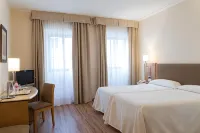

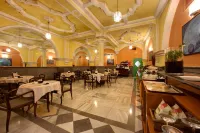


77
Hotel near Centro,Granada
Public parking
24-hour front desk
Luggage storage
+4
"This is a very clean and delightful hotel. Sunlight streams through the Islamic-style glass ceiling of the atrium, making the entire space feel bright and secure. It was a real treat to have a bathtub for a relaxing soak. The surrounding area also offered many delicious dining options. I would certainly love to stay here again. My daughter particularly loved the cute patterns on the wall tiles."
Very Good
41 reviews
8.9/10
1 night
From €43

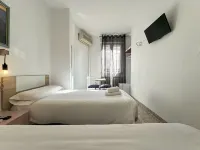
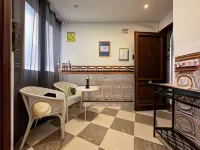
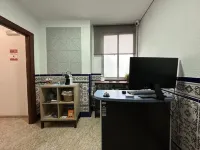


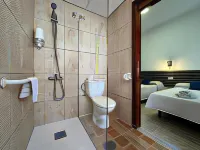
80
Hotel near Centro,Granada
Luggage storage
Wi-Fi in public areas
Tour and ticket booking service
"Buenísima ubicación, habitación muy limpia aunque un poco pequeña, al tirar la cadena del wc es un poco ruidosa. Los días que estuvimos no funcionaba muy bien el ascensor, y subíamos al 3° por las escaleras. Te ponen café a tu disposición en la recepción.
Muy amables en todo momento, dan información y recomendaciones de lugares que visitar. Repetiremos seguro. Recomendable!!"
Very Good
24 reviews
8.6/10
1 night
From €67

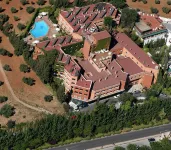

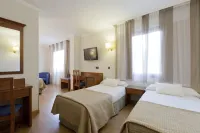
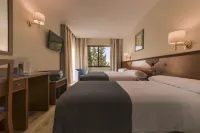


99+
Hotel near Centro,Granada
Sunbathing area
Outdoor swimming pool
Private parking
+8
"The location couldn't be better, directly across from the Alhambra and just a 2-minute walk away. Conveniently, the Alhambra's car park is right opposite, and 22 Euros for a full day isn't bad, though the hotel itself doesn't offer parking. The room felt quite dated; apart from three beds, a table, and a sofa, it was pretty basic. The bathroom only had a shower over the tub. The bed only came with a duvet cover and no actual duvet inside. While this might be a local custom for summer, I personally found it uncomfortable. Breakfast options were limited, but the quality was generally good."
Great
135 reviews
9.0/10
1 night
From €48


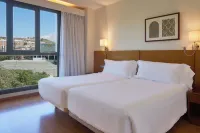

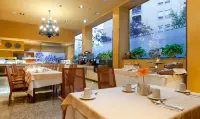
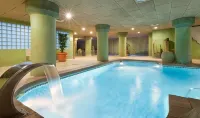
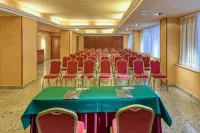
99+
Hotel near Ronda District,Granada
Sauna
Spa
Massage room
+10
"The hotel was as expected. It was a very pleasant stay with very friendly and helpful service. The room was good in terms of both size and furnishings and also offered a very nice view from the window (especially at night when everything is lit up). The breakfast was great! There was even the option of having an omelette freshly prepared with all the ingredients you could want. There was also a vending machine that offered freshly squeezed orange juice. That was really great.
The location of the hotel was absolutely fine. You walk across the river and then have the option of being taken anywhere using public transport. The staff at the reception were very friendly and helpful. Our luggage was happily stored and stowed away on the day of our departure so that we could explore the city a bit.
The only drawback was the suggested pool area. The photos online showed a nice pool that we wanted to use. Unfortunately, the classic evening ”swimming” as we know it doesn't seem to exist in Spain. They only ever talk about the spa area and as I understand it, you have to book a massage to even get access to it. It is also not open until 9 p.m. as advertised, but only until 7 p.m. We thought that was a bit of a shame. Otherwise, however, a recommendable hotel!"
Very Good
44 reviews
8.9/10
1 night
From €39
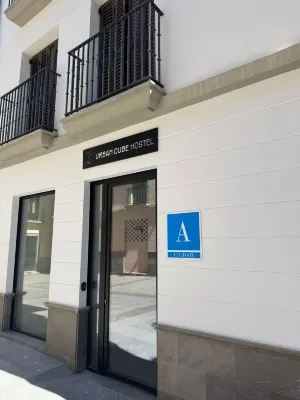
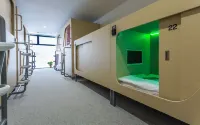

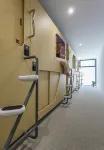

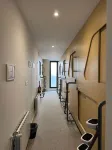

65
Hotel near Centro,Granada
24-hour front desk
Wi-Fi in public areas
Tour and ticket booking service
With a stay at Urban Cube Hostel Granada in Granada (Granada City Center), you'll be within a 5-minute drive of Alhambra and Granada Cathedral. This capsule hotel is 20.1 mi (32.3 km) from Sierra Nevada Ski Resort and 0.1 mi (0.1 km) from Calle Navas.
Make use of convenient amenities such as complimentary wireless internet access, concierge services, and a communal living room.
Featured amenities include a 24-hour front desk, multilingual staff, and microwave in a common area.
Make yourself at home in one of the 42 guestrooms featuring microwaves. Prepare your meals in the shared/communal kitchen. Complimentary wireless internet access is available to keep you connected. Bathrooms with showers are provided.
Very Good
8.9/10
1 night
From €18
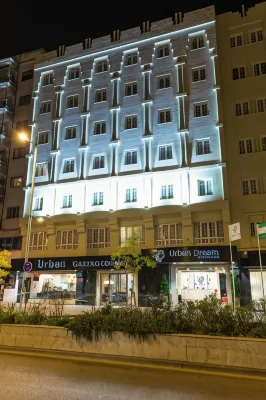
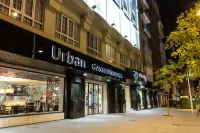
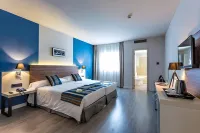


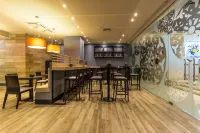

91
Hotel near Ronda District,Granada
Skiing
Public parking
Airport pick-up
+13
"The hotel room was quiet, the bed was comfortable, the bathtub was large, and the hot shower was convenient. It was a place I would like to come back to. However, the distance from the Alhambra Palace was a bit disappointing."
Great
139 reviews
9.2/10
1 night
From €43
Trip.com's insights for hotels in Granada
Plan smarter with Trip.com’s data-backed insights on travel seasons so that you can book your Granada hotel at the right time!
Which month offers the lowest hotel rates in Granada?
January is the most affordable month to book a hotel in Granada, with average nightly rates around €101. Prices peak in September, when rates reach about €136 per night.
(Based on Trip.com data from December 25, 2024 to December 25, 2025.)
(Based on Trip.com data from December 25, 2024 to December 25, 2025.)
0
€50
€100
€150
€118
Dec
€101
Jan
€105
Feb
€114
Mar
€125
Apr
€118
May
€107
Jun
€119
Jul
€123
Aug
€136
Sep
€133
Oct
€115
Nov
What is the cheapest day of the week for hotels in Granada?
Hotel rates in Granada are typically lowest on Tuesday, with average nightly rates around €111. Monday tends to be the most expensive, averaging €124 per night.
(Based on Trip.com data from December 25, 2024 to December 25, 2025.)
(Based on Trip.com data from December 25, 2024 to December 25, 2025.)
0
€50
€100
€150
€124
Mon
€111
Tue
€123
Wed
€120
Thu
€111
Fri
€113
Sat
€121
Sun
What are the hotel rates in Granada this weekend?
Trip.com has found that weekend rates for 3-star hotels in Granada start as low as €59/night. For 4-star hotels, rates start from €159/night, while 5-star hotel rates start from €172/night.
(Based on Trip.com data for December 22, 2025 to December 24, 2025.)
(Based on Trip.com data for December 22, 2025 to December 24, 2025.)
0
€50
€100
€150
€200
€59
3-Star
€159
4-Star
€172
5-Star
Among Trip.com users, which area in Granada is most popular for hotel bookings?
Centro is the most popular area in Granada for hotel searches on Trip.com, with an average price of €127. Áurea Washington Irving by Eurostars Hotel Company, Porcel Alixares, and Hotel Granada Center are among the top-rated hotels in Centro.
(Based on Trip.com data from December 25, 2024 to December 25, 2025.)
(Based on Trip.com data from December 25, 2024 to December 25, 2025.)
0
€50
€100
€150
Centro
€127
Centro
Beiro
€112
Beiro
Albaicin
€110
Albaicin
Zaidin
€109
Zaidin
Ronda District
€108
Ronda District
Genil
€96
Genil
Hotels in Granada Near Popular Landmarks
Discover the top tourist attractions in Granada and book your hotel near the city's most famous towers and entertainment centers to enjoy a stay close to everything you want to visit.
Landmarks
Alhambra
339 hotels
Granada Cathedral
341 hotels
Granada railway station
341 hotels
Patio de Los Leones
341 hotels
Nasrid Palaces
340 hotels
Generalife
341 hotels
Browse Hotels in Granada by Accommodation Type & Amenities
Discover hotels in Granada that match your style, from serviced apartments and countryside stays to hotels with free Wi-Fi and parking, and find the right place for your trip to Granada.

Premium Hotels in Granada
See all
Discover our curated selection of premium hotels in Granada for your next stay

No.
1
9.2/10
128 reviewPalacio Gran Vía, a Royal Hideaway Hotel
Hotel near Centro, Granada
"Great service""Great location"
Select dates to view prices
No.
2
9.7/10
93 reviewSeda Club Hotel - Small Luxury Hotels
Hotel near Centro, Granada
"Great service""Delicious breakfast"
Select dates to view prices
No.
3
9.3/10
119 reviewAlhambra Palace Hotel
Hotel near Centro, Granada
"Great location""Great stay!"
Select dates to view prices
No.
4
8.7/10
69 reviewHotel Palacio de Santa Paula, Autograph Collection
Hotel near Centro, Granada
"Good Location"
Select dates to view prices
No.
5
8.7/10
33 reviewLa Corrala del Realejo
Hotel near Centro, Granada
"Good Location"
Select dates to view prices
No.
6
8.9/10
60 reviewHospes Palacio de Los Patos Granada
Hotel near Ronda District, Granada
"Good Location"
Select dates to view pricesMost Booked Hotels in Granada by Travellers This Past Month
See all
A curated selection of most in-demand Granada hotels, based on an analysis of booking trends, guest reviews, and ratings for quality and cleanliness.
No.1
9.6/10
156 reviewÁurea Washington Irving by Eurostars Hotel Company
Hotel near Centro, Granada 80% of visitors choose this area
"Great location""Delicious breakfast"
Select dates to view pricesNo.2
9.0/10
168 reviewHotel Granada Center
Hotel near Centro, Granada 80% of visitors choose this area
"Convenient location""Easy to get around"
Select dates to view pricesNo.3
9.2/10
195 reviewCatalonia Granada
Hotel near Beiro, Granada
"Convenient location""Easy to get around"
Select dates to view pricesNo.4
9.3/10
61 reviewBarceló Carmen Granada
Hotel near Ronda District, Granada
"Great stay!""Great swimming pool"
Select dates to view pricesNo.5
9.3/10
62 reviewSercotel Palacio de Los Gamboa
Hotel near Centro, Granada 80% of visitors choose this area
"Great service""Clean and tidy"
Select dates to view pricesNo.6
9.4/10
96 reviewToc Hostel Granada
Hotel near Centro, Granada 80% of visitors choose this area
"Great rooms""Great stay!"
Select dates to view pricesNo.7
10.0/10
1 reviewThe Central House Granada Elvira
Hotel near Centro, Granada 80% of visitors choose this area
"Good Location"
Select dates to view pricesNo.8
9.2/10
134 reviewOccidental Granada
Hotel near Ronda District, Granada
"Great location""Great rooms"
Select dates to view pricesNo.9
9.3/10
119 reviewAlhambra Palace Hotel
Hotel near Centro, Granada 80% of visitors choose this area
"Great location""Great stay!"
Select dates to view pricesNo.10
8.9/10
41 reviewAMC Granada
Hotel near Centro, Granada 80% of visitors choose this area
"Great location""Clean and tidy"
Select dates to view pricesBest Granada hotels with breakfast
See all
Start your day with a tasty breakfast at one of our top hotels in Granada.
Barceló Granada Congress
Hotel near Ronda District, Granada
In terms of safety against viral diseases including COVID19 we have adapted our prevention and hygiene procedures to ensure the atmost safety and wellbeing of our guests staff and suppliers at all our hotels
For your study and development we have constituted a Technical Commission whose aim is for us to enjoy the return to the activity with maximum safety
We have created the program for this purpose We care about you which includes a sizing plan to ensure you enjoy your next stay at any of our hotels in complete tranquility.
Barcelo Granada Congress part of Barcelo Hotel Group is a symbol in the historic city of Granada both for its privileged location and for its original architectural design. The hotel enjoys an unbeatable location located just a few meters from Calle Recogidas that connects the hotel with the city center. The hotel is part of the so called Zone 1 of the city the preferred area for all those who visit Granada for business reasons. It has a total of 249 rooms distributed in Superiors Junior Suites and the spectacular Suites with panoramic views of the city. All of the rooms are fully equipped equipped among other facilities complete bathroom with hydromassage column minibar hair dryer free Wifi safe pillow menu. All rooms include Junior Suites and Suites with whirlpool. The Suites also have a spacious lounge and panoramic bedroom with spectacular views of the entire city.Barcelo Granada Congress offers exceptional facilities and services highlighting its USpa and Fitness Center with panoramic views of the Sierra Nevada where you can enjoy all kinds of hydrotherapy and massage treatments with a specialized staff who will advise you at all times . In addition to the gastronomic restaurant where you can enjoy the unique flavors of the typical Andalusian gastronomy the hotel also has underground parking piano bar Japanese garden.
9.0/10
Great115 reviewPrice per night from:€65
Eurostars Gran Via
Hotel near Centro, Granada 80% of visitors choose this area
With a stay at Eurostars Gran Vía Hotel, you'll be centrally located in Granada, steps from Granada Cathedral and 9 minutes by foot from Alhambra. This luxury hotel is 20.8 mi (33.5 km) from Sierra Nevada Ski Resort and 0.1 mi (0.1 km) from Calle Gran Via de Colon.
Relax at the full-service spa, where you can enjoy massages, body treatments, and facials. If you're looking for recreational opportunities, you'll find a sauna and bicycles to rent. Additional amenities at this hotel include complimentary wireless internet access, tour/ticket assistance, and a banquet hall.
Satisfy your appetite with Regional cuisine at Asador Contrapunto, a restaurant where you can enjoy drinks at the bar/lounge and dine alfresco. Snacks are also available at the coffee shop/cafe. Buffet breakfasts are available daily from 7:30 AM to 10:30 AM for a fee.
Featured amenities include a business center, a 24-hour front desk, and luggage storage.
Make yourself at home in one of the 39 air-conditioned rooms featuring minibars. Complimentary wireless internet access is available to keep you connected. Bathrooms feature separate bathtubs and showers, complimentary toiletries, and hair dryers. Conveniences include phones, as well as safes and desks.
8.7/10
Very Good123 reviewPrice per night from:€76
Palacio Gran Vía, a Royal Hideaway Hotel
Hotel near Centro, Granada 80% of visitors choose this area
Palacio de Gran Via is a 5 star Grand Luxury hotel located in the heart of Granada on Gran Via de Colon
Since 1905 it has been one of the most emblematic buildings of the city and previously home to the old Rodriguez Acosta bank
The building was fully restored in 2022 to be converted into a hotel maintaining its essence and preserving architectural elements
38 Bright elegant and fully equipped rooms
At the top of the building is Royal Heaven a panoramic terrace
9.2/10
Great128 reviewPrice per night from:€304
Hotel Palacio de Santa Paula, Autograph Collection
Hotel near Centro, Granada 80% of visitors choose this area
The Palacio de Santa Paula Autograph Collection, one of the best five-star hotels in Granada, is a 72 room restored masterpiece that was also declared an artistic and historic monument. It replaced the Santa Paula Monastery and the Casa Morisca, which existed in the XVI and XII centuries respectively. The beautiful fully renovated hotel in 2023, is located in the historic center of Granada near the Albaicín and Sacromonte areas, the Cathedral and of course, the Alhambra. The luxury hotel’s restaurant, “El Claustro”, where the Santa Paula monastery refectory used to be, offers guests haute cuisine that fuses elements of traditional Andalusian gastronomy with modern culinary concepts, a gastronomic trip around Granada province. R.T.A. Registration Number H/GR/01177.
8.7/10
Very Good69 reviewPrice per night from:€339
Seda Club Hotel - Small Luxury Hotels
Hotel near Centro, Granada 80% of visitors choose this area
With a stay at Seda Club Hotel – Small Luxury Hotel in Granada (Granada City Center), you'll be a 4-minute walk from Granada Cathedral and 13 minutes by foot from Alhambra. This luxury hotel is 20.5 mi (33.1 km) from Sierra Nevada Ski Resort and 0.4 mi (0.6 km) from Calle Navas.
Take time to pamper yourself with a visit to the full-service spa. This hotel also features complimentary wireless internet access, concierge services, and a banquet hall.
Enjoy a meal at Seda Club Restaurant or snacks in the hotel's coffee shop/cafe. Wrap up your day with a drink at the bar/lounge. Buffet breakfasts are available daily from 7:00 AM to 10:30 AM for a fee.
Featured amenities include dry cleaning/laundry services, a 24-hour front desk, and multilingual staff.
Make yourself at home in one of the 21 guestrooms featuring minibars and Smart televisions. Complimentary wireless internet access is available to keep you connected. Bathrooms feature separate bathtubs and showers, designer toiletries, and hair dryers. Conveniences include safes and desks, and housekeeping is provided daily.
9.7/10
Amazing93 reviewPrice per night from:€347
Hospes Palacio de Los Patos Granada
Hotel near Ronda District, Granada
A Grand Luxury Palace in the historic center of the city. The Palacio de los Patos is a Grand Luxury Boutique Hotel located in a fully renovated 19th-century palace. The hotel also has an annex building, the Alabastro Building, which is a new building that combines depth and transparency. Together, they form a team ready to provide you with all the luxury and comforts you deserve during your stay in Granada. A stay at Hospes Palacio de los Patos, a Member of Design Hotels places you in the heart of Granada, within a 10-minute walk of Granada Cathedral and Plaza Nueva. This luxury hotel is 0.7 mi (1.1 km) from Alhambra and 20.2 mi (32.5 km) from Sierra Nevada Ski Resort. Relax and unwind with massages, body treatments, and facials. Additional features at this hotel include complimentary wireless internet access, concierge services, and wedding services. Grab a bite to eat at LOS PATOS, a fine-dining restaurant which features a bar/lounge, or stay in and take advantage of the 24-hour room service. Buffet breakfasts are available daily for a fee. Featured amenities include complimentary wired internet access, a business center, and complimentary newspapers in the lobby. Planning an event in Granada? This hotel has 431 square feet (40 square meters) of space consisting of a conference center and 5 meeting rooms. A roundtrip airport shuttle is provided for a surcharge (available 24 hours), and self parking (subject to charges) is available onsite. Make yourself at home in one of the 40 air-conditioned rooms featuring minibars and espresso makers. Your bed comes with down comforters and Egyptian cotton sheets. Wired and wireless internet access is complimentary, while 42-inch plasma televisions with satellite programming provide entertainment. Private bathrooms with bathtubs or showers feature complimentary toiletries and bidets.
8.9/10
Very Good60 reviewPrice per night from:€255
La Corrala del Realejo
Hotel near Centro, Granada 80% of visitors choose this area
A stay at La Corrala del Realejo places you in the heart of Granada, within a 15-minute walk of Alhambra and Granada Cathedral. This aparthotel is 20 mi (32.1 km) from Sierra Nevada Ski Resort and 0.3 mi (0.4 km) from Paseo del Salón.
Enjoy a range of recreational amenities, including a hot tub, a seasonal outdoor pool, and bicycles to rent. This aparthotel also features complimentary wireless internet access and concierge services.
Buffet breakfasts are available daily from 8:30 AM to 11:00 AM for a fee.
Featured amenities include luggage storage, a safe deposit box at the front desk, and an elevator. Limited parking is available onsite.
Make yourself at home in one of the 6 individually decorated guestrooms, featuring kitchens with full-sized refrigerators/freezers and ovens. Your Tempur-Pedic bed comes with down comforters and Egyptian cotton sheets. 50-inch Smart televisions with satellite programming provide entertainment, while complimentary wireless internet access keeps you connected. Conveniences include safes and desks, and housekeeping is provided daily.
8.7/10
Very Good33 reviewPrice per night from:€194
Gran Hotel Luna de Granada
Hotel near Ronda District, Granada
With a stay at Gran Hotel Luna de Granada in Granada (Distrito Ronda), you'll be within a 5-minute drive of Alhambra and Granada Cathedral. This family-friendly hotel is 0.4 mi (0.7 km) from Library of Andalucia and 0.7 mi (1.2 km) from Parque Garcia Lorca.
Pamper yourself with a visit to the spa, which offers massages and facials. You can take advantage of recreational amenities such as an indoor pool, a sauna, and a fitness center. Additional amenities at this hotel include complimentary wireless internet access, concierge services, and babysitting (surcharge).
Satisfy your appetite at the hotel's coffee shop/cafe, or stay in and take advantage of the 24-hour room service. Quench your thirst with your favorite drink at the poolside bar. Buffet breakfasts are served on weekdays from 7:00 AM to 10:30 AM and on weekends from 7:00 AM to 11:00 AM for a fee.
Featured amenities include a 24-hour business center, complimentary newspapers in the lobby, and dry cleaning/laundry services. Event facilities at this hotel consist of conference space and meeting rooms. A roundtrip airport shuttle is provided for a surcharge (available 24 hours), and self parking (subject to charges) is available onsite.
Make yourself at home in one of the 366 air-conditioned rooms featuring minibars and plasma televisions. Complimentary wireless internet access is available to keep you connected. Private bathrooms with bathtubs or showers feature complimentary toiletries and bidets. Conveniences include safes and desks, and housekeeping is provided daily.
8.2/10
Very Good124 reviewPrice per night from:€86
Melia Granada
Hotel near Centro, Granada 80% of visitors choose this area
The Meliá Granada is located in the heart of the city of Granada, near the cathedral, Calle Navas, Alcaiceria, the Puerta Real, Calle Elvira, Plaza Nueva, Realejo, Paseo de los Tristes, the Science Park and the Congress Centre.Its strategic location in the city centre, personalised service and excellent facilities make it the perfect choice for your visit to Granada. Half board includes breakfast buffet and dinner menu served.
8.9/10
Very Good131 reviewPrice per night from:€104
B&B Hotel Granada Estación
Hotel near Beiro, Granada
Located in Granada (Beiro), B&B Hotel Granada Estación is within a 10-minute drive of Alhambra and Granada Cathedral. This family-friendly hotel is 1.4 mi (2.2 km) from University of Granada and 1.4 mi (2.3 km) from Cueva de las Ventanas.
Make use of convenient amenities such as complimentary wireless internet access, an arcade/game room, and a television in a common area. This hotel also features tour/ticket assistance, a banquet hall, and a vending machine.
Buffet breakfasts are served on weekdays from 7:00 AM to 10:30 AM and on weekends from 7:00 AM to 11:30 AM for a fee.
Featured amenities include express check-in, express check-out, and dry cleaning/laundry services. Planning an event in Granada? This hotel has 700 square feet (65 square meters) of space consisting of conference space and a meeting room. Self parking (subject to charges) is available onsite.
Make yourself at home in one of the 81 guestrooms featuring minibars. Complimentary wireless internet access is available to keep you connected. Bathrooms feature shower/tub combinations, complimentary toiletries, and hair dryers. Conveniences include safes and desks, and housekeeping is provided daily.
8.4/10
Very Good51 reviewPrice per night from:€70
Verified Reviews From Guests at Granada Hotels
See all
Browse these genuine traveler ratings and real guest reviews to find the best Granada hotels.
9.5/10
Amazing
GGuest UserThe location is particularly good, just upstairs in the chocolate shop in the lively city center. If you store your luggage, you have to go to another store in his house. If you don't store it, you can check in directly. It is very convenient and simple. The room is large, and the washing machine and dishwasher are complete. The only problem is that the hot water cannot be washed all the time. If there are many people, it may have to be washed the next morning. But I still like this hotel very much.
BiBo Suites Real Chancilleria
Hotel near Albaicin, Granada 20% of visitors choose this area
Price per night from:€124
9.2/10
Great
BBudingduoduoaibudingThe service attitude is very good, the room is cleaned very well, and the clothes are folded or hung up. The location is quite convenient. The breakfast is average, and the fruits are quite rich. What is not ideal is that the room on the 7th floor is arranged. I don’t know if it is a workshop or something upstairs. There is always noise. It will only be quiet at night when it is time to go to bed. In addition, there is always a peculiar smell in the room, even though we have been opening the window for ventilation. Although the room has an indoor viewing balcony, the roof of the building next door can be seen from the outside, which is not beautiful.
9.0/10
Great
CcissyThe room is very big, the largest room I've stayed in Spain. It can accommodate 4 people and has a large sofa bed, but people who don't like sofa beds should be careful when choosing. There is a kitchen and the room has windows for air circulation. It costs 9 euros to take a taxi from the train station to the hotel. There is a Carrefour 1-2 minutes away from the hotel, which is very convenient for shopping. It takes 3-4 minutes to walk to the sightseeing train station. The service at the front desk is very good, and they will tell you where to exchange the bus card! Thank you very much to the front desk lady whose name starts with S, who made our trip much easier!
Sercotel Granada Suites
Hotel near Centro, Granada 80% of visitors choose this area
Price per night from:€77
9.0/10
Great
GGuest UserIt's really close enough to get to the Alhambra Palace ticket office within 5 minutes. Just go down the stairs across the street from the hotel. Breakfast opens at exactly 7:30 (. They also store your luggage. Anyway, the location is the best (you have to get to the Alhambra Palace ticket office by 8:20 am).
8.9/10
Very Good
SSavannah DubienThe hostel is in a great location. Great amenities including a full kitchen, free tea, a seating area with couches and a large kitchen table to sit at. The beds are very confortable and the washrooms are clean and new. Staff are kind and very helpful. I wasn’t a fan of the company they used for activities and they didn’t have any « home » activities while I was there, probably since it’s off-season.
8.6/10
Very Good
GGuest UserHa sido increíble , es verdad que hemos estado solo un día . Pero se nos ofrecía todo , súper limpio las habitaciones , cuarto de baños el hotel en si estaba muy limpio . Deseando volver
8.5/10
Very Good
AAira CharisDidn't expect this hotel is just a stone away from the main train station. Bus stops outside the hotel, surrounded with cafes, restaurants and easy to get taxi service. Free buffet breakfast was okay, same menu daily. Strictly 12nn check out no extensions not even 30mins or even if we are willing to pay extra they did not allow us even if the hotel ia not fully booked. Overall, we had a pleasant stay.
8.5/10
Very Good
GGuest UserThis Aparthotel was in an absolutely perfect location and easily accessible to the main sites of Granada. The communication with the customer support was excellent and it was easy to check in and out or get an early check in for an additional cost. The app was really useful as I could check in that way and had a note of my entrance key in case I forgot the number. The facilities, cleanliness and little extras provided such as water, coffee and crisps were really appreciated after a day of travel. The studio I was in was absolutely gorgeous, modern, clean and whilst in the centre of the town, quiet, so I could get a good night's sleep. The only thing that was a slight disappointment was that I booked the apartment thinking I would be getting a view of the town/square, but I did have balcony views over the balconies and into the apartments of the identical building directly in front of me. So, no view to speak of, but I didn't spend much time in the apartment as there was plenty to do in Granada. Overall, 4/5 for the experience and will be staying in the Libere again when next travelling to Spain.
Apartamentos Líbere Granada Catedral
Hotel near Centro, Granada 80% of visitors choose this area
Price per night from:€73
8.4/10
Very Good
YyimiyawJust in the city center, walking to the bus station and restaurant souvenir shop is very close! The hotel can store luggage for free, the service attitude is very warm, ask where to buy the suitcase lock and enthusiastic guide. There is no thick quilt in the room, you need to take a blanket from the cabinet and spread it on the bed, and there is no one at the front desk after 10 pm, no one wants to buy a bottle of water...
Hotel Plaza Nueva
Hotel near Albaicin, Granada 20% of visitors choose this area
Price per night from:€49
FAQs About Granada Hotels
What are the best places to stay in Granada?
Some top places to stay in Granada are near popular attractions like Alhambra and Granada Cathedral—so you can quickly get to top landmarks and amenities you need.
What is the average price of a hotel in Granada for this weekend?
According to Trip.com’s latest 12-month data, 3-star hotels in Granada have an average price of €207 per night this weekend. For 4-star hotels, the average rate is €221 per night. If you’re seeking luxury, 5-star hotels in Granada typically cost €442 per night this weekend.
What is the average nightly price of hotels in Granada on weekdays?
Based on Trip.com’s latest 12-month data, the average nightly rate for 3-star hotels in Granada on weekdays is €152. For 4-star hotels, the average cost is around €187 per night. For a luxury stay, 5-star hotels in Granada generally have an average price of €403 per night on weekdays.
What are the best pet-friendly hotels in Granada?
La Perla Granada Suites (price from €37) and Honest Granada Hotel (price from €80) welcome pets. Bring your pets along for an enjoyable stay!
What hotels in Granada offer an especially good breakfast?
Begin your day with a tasty and satisfying breakfast! Áurea Washington Irving by Eurostars Hotel Company (price from €117), Alhambra Palace Hotel (price from €373) and Barceló Granada Congress (price from €90) provide the best breakfast to start your day.
Which hotels in Granada provide fitness facilities?
Áurea Washington Irving by Eurostars Hotel Company (price from €117), Hotel Granada Center (price from €91) and Catalonia Granada (price from €68) include fitness facilities, so you can maintain your routine while traveling. Stay on track with your fitness goals while on the go!
What are the best hotels with a spa in Granada?
A spa hotel can make your trip more enjoyable with relaxing amenities. Áurea Washington Irving by Eurostars Hotel Company (price from €117), Catalonia Granada (price from €68) and Senator Granada (price from €39) are great choices for spa hotels offering quality services.
What hotels in Granada are best for couples?
For couples traveling to Granada, many prefer staying at Hotel Comfort Dauro 2 (price from €49).
What are the best hot spring hotels in Granada?
Hotels with hot springs provide a perfect way to relax and recharge during your stay. Eurostars Gran Via (price from €108) and Hospes Palacio de Los Patos Granada (price from €294) include hot springs for a truly relaxing experience.
Which hotels in Granada have pools?
Áurea Washington Irving by Eurostars Hotel Company (price from €117), Porcel Alixares (price from €47) and Catalonia Granada (price from €68) are excellent options for hotels with swimming pools. Book your stay to enjoy the pool and make your trip more enjoyable.
What are the best hotels in Granada near Alhambra?
Some standout hotels in Granada close to Alhambra include Áurea Washington Irving by Eurostars Hotel Company (price from €117), Alhambra Palace Hotel (price from €373) and Crisol Guadalupe (price from €54), all within easy walking or transit distance of Alhambra, perfect for travelers wanting to explore the landmark and its surroundings.
How to get good deals on hotels in Granada?
Find the best hotel deals and promotions on Trip.com, available year-round for both first-time and loyal users. Please check the promotions page to see what promotions are available now on Trip.com.
Granada Hotels Info
Number of Reviews
10,754
Total Properties
338
Weekday Avg. Price
€164
Weekend Avg. Price
€216
Trending hotel
Áurea Washington Irving by Eurostars Hotel Company
Popular area
Centro
Keep Exploring Granada
Most Viewed Granada Hotels
Gar Anat Hotel BoutiqueDon JuanPalacio Gran Vía, a Royal Hideaway HotelHostel El CascabelBarceló Granada CongressCatalonia GranadaAMC GranadaApartamento CastilloBarceló Carmen GranadaChezmoihomes Granada City HubCrisol GuadalupeAlhambra Palace HotelGran Hotel Luna de GranadaÁurea Washington Irving by Eurostars Hotel CompanyToc Hostel GranadaPorcel NavasHotel SaraySuites Gran Vía 44ChezmoiHomes Alhambra PenthouseSercotel Palacio de Los Gamboa
Granada Hotels near Attractions
Hotels near University of GranadaHotels near Royal Chapel of GranadaHotels near Plaza de Toros de GranadaHotels near GeneralifeHotels near Archaeological Museum of GranadaHotels near Nasrid PalacesHotels near Iglesia del SagrarioHotels near Acera del DarroHotels near Puerta de la JusticiaHotels near Iglesia Parroquial de Nuestro SalvadorHotels near Monasterio de la ConcepcionHotels near AlhambraHotels near Granada (Bus Station)Hotels near Mirador San NicolasHotels near Museo de Bellas Artes de GranadaHotels near Basilica of Saint John of GodHotels near Parque de las CienciasHotels near Plaza NuevaHotels near El BanueloHotels near Camping Hotel Sierra NevadaHotels near Granada CathedralHotels near Patio de Los LeonesHotels near Manuel de Falla House MuseumHotels near Monasterio de la CartujaHotels near Hammam Al ÁndalusHotels near C. Gran Vía de ColónHotels near Puerta de Las GranadasHotels near Museum of the AlhambraHotels near Royal Monastery of St. JeromeHotels near Mezquita Mayor de Granada
Trending Flights to Granada
Trending Flights From Granada
Flights from Granada to MobileCheap flights from Granada to BergeracBest offers Granada to Aspen flightsCheap flights from Granada to SarasotaFlights from Granada to NimesFlights from Granada to KomatsuCheap flights from Granada to AdiyamanCheap flights from Granada to YonagoCheap flights from Granada to DarwinCheap flights from Granada to Santa FeCheap flights from Granada to JuliacaFlights from Granada to GaziantepBest offers Granada to Lijiang flightsFlights from Granada to ConakryCheap flights from Granada to Sao Tome IslandFlights from Granada to TemucoCheap flights from Granada to AjaccioFlights from Granada to DoualaFlights from Granada to CharlestonCheap flights from Granada to HortaBest offers Granada to Florencia flightsBest offers Granada to Gallivare flightsFlights from Granada to SfaxBest offers Granada to Lorient flightsFlights from Granada to Puerto PlataFlights from Granada to KarachiBest offers Granada to Syracuse flightsCheap flights from Granada to GreensboroBest offers Granada to Sint Maarten flightsCheap flights from Granada to Ta Khmau
Flights to Trending Cities
Round-trip flights to SplitCheap airline to RiminiCheap flights to DubaiRound-trip flights to ManilaCheap airline to Abu DhabiCheap airline to CienfuegosCheap airline to IslipRound-trip flights to RanchiCheap airline to MasudaRound-trip flights to JamnagarCheap airline to DurrieCheap airline to SkiathosCheap flights to KhasabRound-trip flights to LeipzigRound-trip flights to LinyiCheap flights to FullertonRound-trip flights to Forest CityRound-trip flights to GafsaCheap flights to LifouCheap airline to Mili AtollCheap flights to AdareilCheap airline to WangeroogeCheap flights to Kansas CityCheap flights to MalmoCheap airline to CaruaruRound-trip flights to CottbusCheap airline to CraneCheap flights to CamdenCheap flights to Ji-ParanaRound-trip flights to Chitina
Trending hotels in other cities
Hotels in DubaiHotels in New YorkHotels in OsakaHotels in SingaporeHotels in RiyadhHotels in Genting HighlandsHotels in DuluthHotels in PhuketHotels in VailHotels in Hong KongHotels in ShenzhenHotels in Quezon CityHotels in Mammoth LakesHotels in BaliHotels in Ras Al KhaimahHotels in Ho Chi Minh CityHotels in CoronHotels in ZurichHotels in ShanghaiHotels in Palm DesertHotels in JeddahHotels in LangkawiHotels in DamascusHotels in Guatemala CityHotels in PangandaranHotels in WeimarHotels in PoznanHotels in AhangamaHotels in AligarhMotel 6 Azle, TX
